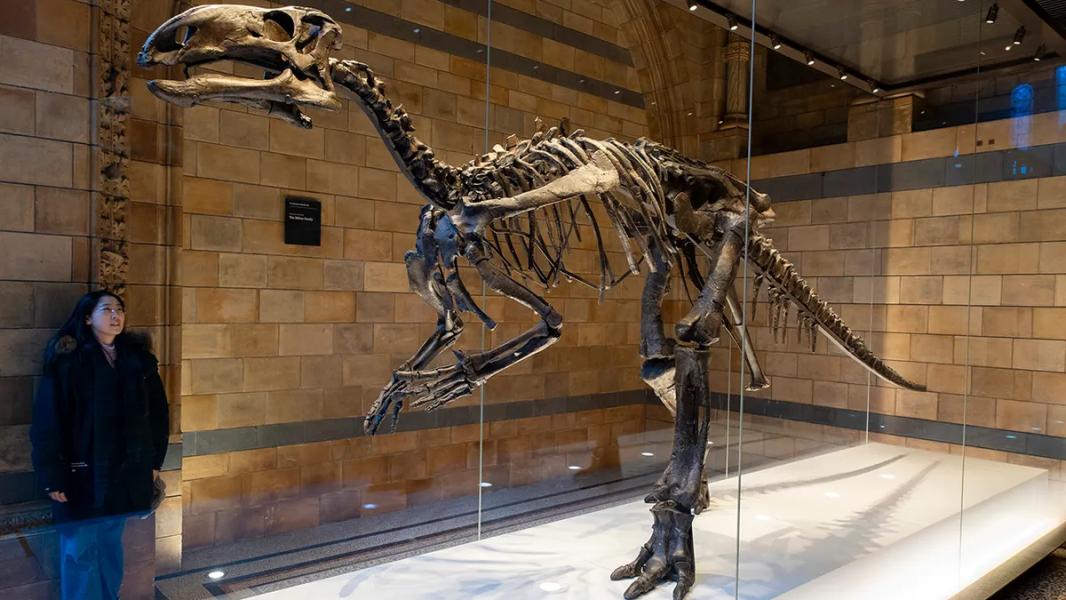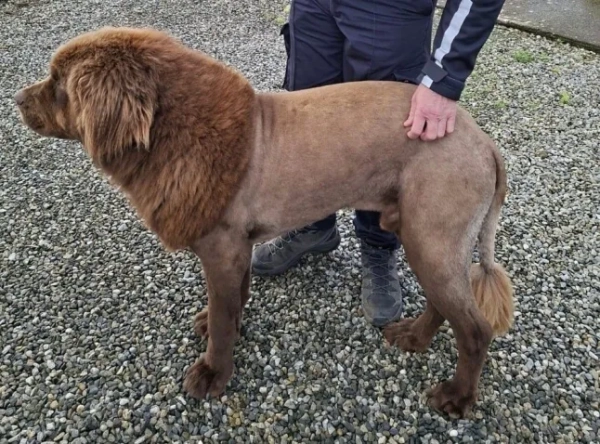
Video: Paleontologist Shares Impressive Dinosaur Footprint Discovered on Beach
British paleontologist Joe Thompson shares details of the 3ft Iguanodon footprint found on the Isle of Wight, as well as other ancient fossils.
Join Fox News to access this content. You’ll also get special access to select articles and other premium content with your account — completely free. By entering your email address and clicking Continue, you agree to the Fox News Terms of Use and Privacy Policy, including our Financial Incentive Notice. Please enter a valid email address. By entering your email address and clicking Continue, you agree to the Fox News Terms of Use and Privacy Policy, which includes our Financial Incentive Notice. If you have problems, click here.
A huge Iguanodon dinosaur footprint dating back more than 100 million years has been discovered on an English beach, SWNS news agency reports.
Palaeontologist Joe Thompson, a fossil guide at Wight Coast Fossils who found the print, told Fox News Digital he made the discovery on the Isle of Wight while on a beach looking for fossils.
“The geology here is perfect,” he said in an on-camera interview.
Thompson had been walking for about an hour or two when he noticed a large purple object in the clay.
“It turned out to be a really huge iguanodon footprint,” he said.
According to Thompson, Iguanodon fossils are quite common around the world, with specimens even found in some U.S. states, such as Utah and Colorado.

Thompson said the striking aspect of the find was the colossal size of the dinosaur footprint. (SWNS)
He added that the Isle of Wight and Britain as a whole were exceptionally fertile regions for fossil prospecting.
He also noted that among the most famous dinosaurs of the Cretaceous period are the three-horned Triceratops and the giant Patagotitan, but they are not found on the Isle of Wight.
Instead, people are more likely to find the remains of animals like the iguanodon that left the giant footprint Thompson discovered last week.
“They're just amazing creatures,” he said of the dinosaurs, which could reach lengths of 32 to 36 feet. “They moved in large groups, feeding on vegetation — they were herbivores.”

The Iguanodon skeleton is on display at the Natural History Museum in London. The print Thompson found belongs to this species, he explained. (Mike Kemp/In Pictures via Getty Images)
The most impressive aspect of the find, Thompson said, was its size.
“This track was just gigantic – just under a metre [about 3 feet] long. So it was a pretty big iguanodon, much bigger than almost all the other iguanodon tracks found on this stretch of coast,” he added.
“It may have been a species of Iguanodon that we don't yet know about, as it is considerably larger than other tracks found in slightly older layers on the Isle of Wight.”
“We won't know for sure until we find fossils in the same [rock] layers.”
Because the layers of the coast are constantly being eroded by the sea, fossils are still being found, making the island a popular tourist destination.
Wight Coast Fossils, for whom Thompson runs tours, leads groups along the coast in search of fragments of history.
“It may have been a species of Iguanodon that we don't know about yet.”
Thompson recently started his own company, South Coast Fossils, which offers people the opportunity to search for things like shark teeth and fossilized shells.
Digging into the rock is prohibited, he said, but if tour participants see any fossils washed up on the beach, they can take them with them.
“It's always a good idea to let the museum know if it's something significant,” he added.
Sourse: www.foxnews.com





